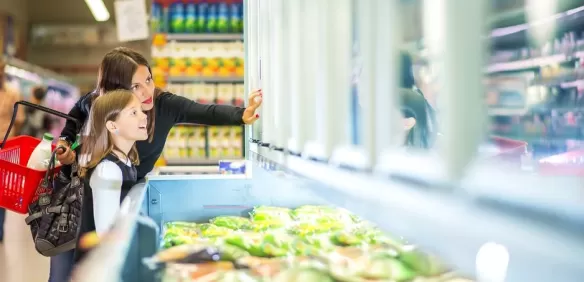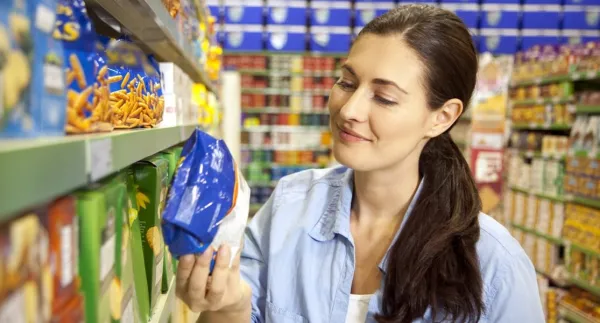
How to increase the shelf life of food products?
Are you looking to preserve the quality and freshness of your food products for longer? The technique of packaging in a protective atmosphere for food gases (MAP) is the solution!
From the moment the minced steaks are formed, the pizza assembled or the coffee ground, the race against time begins. Natural deterioration and spoilage of products endanger the quality and shelf life of food. How the product is handled during processing, during refrigeration or on the packaging line is critical to its shelf life and overall quality. Find out how to keep food products fresh using modified atmosphere packaging.
Packaging food in a protective environment, a solution for the future
The possibilities of packaging in a protective atmosphere perfectly respond to a number of important trends and developments found among consumers today. Who doesn't want to enjoy fresh products while preserving their taste and texture for as long as possible? Who is not looking for natural products containing as few preservatives as possible, or easy-to-cook, ready-to-use dishes and meals in individual portions? By extending the shelf life of food, M.A.P technology therefore has numerous advantages:
- Improve shelf life and reduce waste and returns, limit food waste,
- Improve the appearance of food products and preserve their freshness,
- Reduce the use of preservatives and other chemicals to promote better nutrition, healthier and more natural products,
- optimise costs, levels and productivity through improved processes.
How to dramtically extend the shelf life of food products
A particularly effective way to extend the life of food products is to use conservation under a protective atmosphere, or Modified Atmosphere Packaging (MAP). This technique involves replacing the air in the packaging with a gas or gas mixture specific to the product to be preserved. Studies show that foods packaged with MAP technology have a shelf life two to five times longer than traditionally packaged foods.
Packaging gases help extend product shelf life by slowing microbial, enzymatic and physical deterioration that otherwise occurs in air. They help preserve the color, taste and nutritional value of foods.
The gaseous atmosphere is composed of either a pure gas or a gas mixture generally made up of carbon dioxide and nitrogen or argon, and in a few very specific cases, of oxygen. This choice is determined by the type of product, storage conditions and the manufacturer's shelf life goals.
- Carbon dioxide acts by limiting the proliferation of bacteria and the development of mold. It is in fact bacteriostatic and fungistatic. In some cases it is advisable to combine it with nitrogen, as this prevents the packaging from shrinking.
- Nitrogen is widely used for modified atmosphere packaging. It replaces the oxygen in the packaging and therefore prevents oxidation reactions that cause rancidity. In addition, this gas limits the proliferation of aerobic bacteria and functions as an air cushion which helps protect fragile products.
- Argon offers comparable benefits but, compared to nitrogen, it slows down the “breathing” of fresh vegetables more, which has a positive influence on the shelf life of these products.
- Oxygen is a less obvious choice but, in certain circumstances, it offers significant advantages. It is ideal for preserving the attractive color typical of red meat. To avoid microbial degradation, however, oxygen must be mixed with carbon dioxide. Oxygen is also suitable for packaging fresh fruit and vegetables and can be used to prevent the growth of pathogenic bacteria in fish products.
To successfully package in a protective atmosphere and ensure long storage without health risks, it is essential to respect a few good practices: carefully choose the packaging material, the packaging machine, and the appropriate atmosphere for the product to be packaged. It is also very important to put yourself in the best hygienic conditions in order to limit initial microbial contamination and to store the product at the right temperatures.
For which food products?
Most fresh foods whose shelf life decreases when exposed to air benefit from the advantages of the MAP technique:
- meat and poultry,
- prepared meals (pizzas, quiches, hot meals, sandwiches),
- dairy products (grated and sliced cheese, powdered milk),
- bakery products (bread, pastries, biscuits),
- dry foods (nuts, almonds, coffee, chips, instant mashed potatoes),
- fresh vegetables and fruits (salad, grated carrot, fruit salads),
- sea food (fish, fish fillet, seafood).
The MAP technique is suitable for both bulk packaging and individual portion packaging. For over 40 years, Air Liquide has worked with food manufacturers to bring out the best in their products. Over the years, we have built up a database containing more than 1,500 references to foods packaged in a modified atmosphere. Whether meat, seafood, ready meals, dry snacks or fruit and vegetables, our local and international food industry experts are able to quickly answer any possible packaging questions under a protective atmosphere.
Do you have questions about increasing the shelf life of food products? Please fill out our contact form.
Our experts will respond to you within 24 hours
Frequently Asked Questions
How to increase the shelf life of products?
What does “packaged in a protective atmosphere” mean on certain food packaging labels?
What are the different packaging machines for M.A.P?
What installation do I need to use gas?
What modified atmosphere for the conservation of fresh meats?
What modified atmosphere for bakery products?
What modified atmosphere for the conservation of seafood products?
What modified atmosphere for the conservation of cheese and dairy products?
What modified atmosphere for dry products?
What modified atmosphere for the conservation of prepared fruits and vegetables?
How to package in a modified atmosphere in your restaurant?
